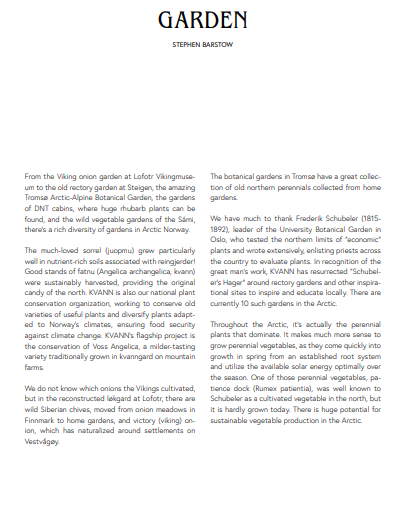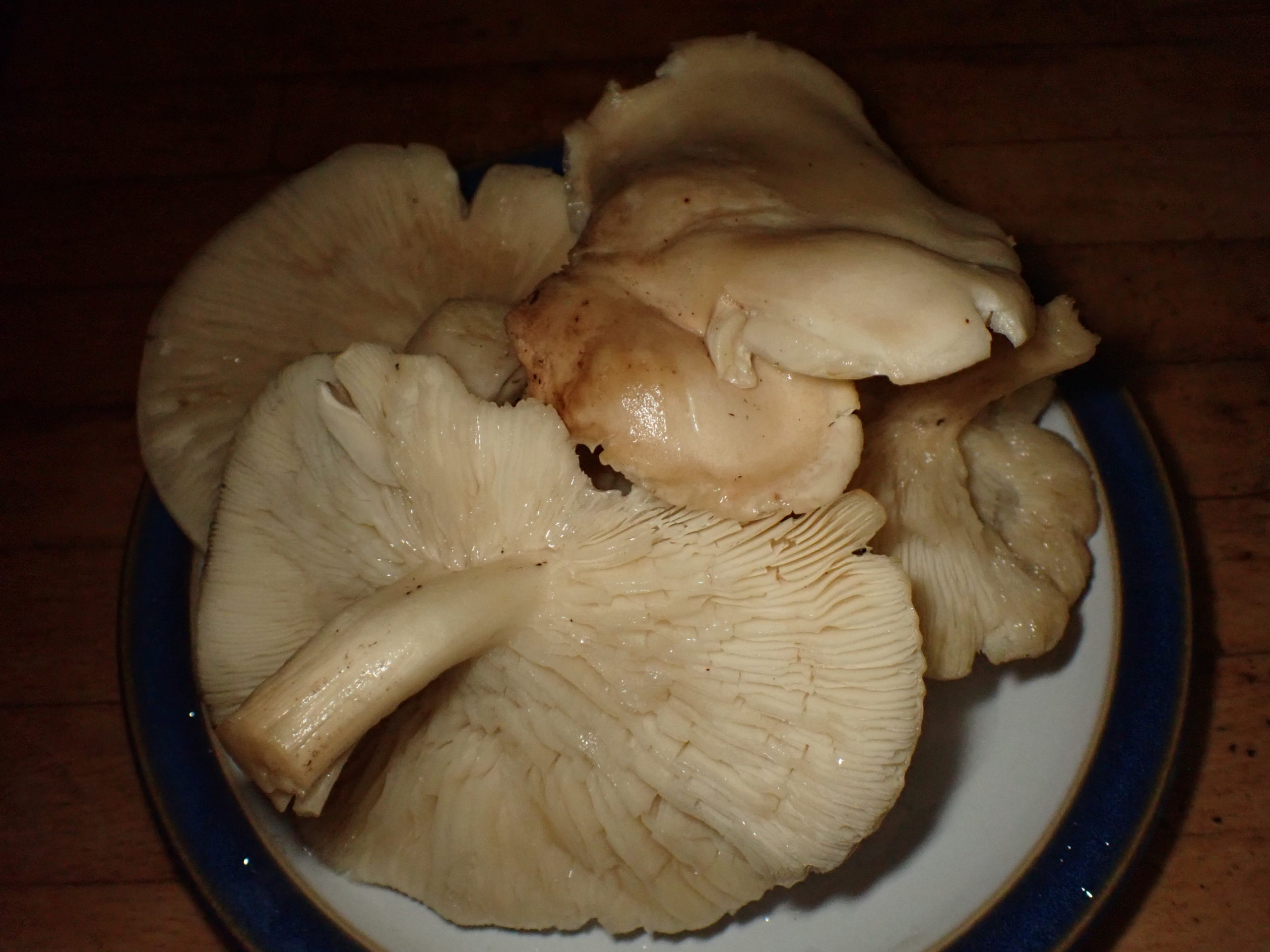TILBUDET ER AVSLUTTET!
Tradisjon tro er det tilbud på flerårige løkplanter fra Løkhagen Chicago i Ringve Botaniske Hagen som sendes i posten over hele landet tidlig i oktober (standard KVANN priser for å dekke mine foresendelsesutgifter). Denne gangen er det også tilbud på noen flerårige grønnsaker fra Verdenshagen (Væres Venners Felleshagen)
ID Tall / Art/ Sort / Norsk navn
11 Allium nutans Isabelle sibirsk nikkeløk
12 Allium nutans Caroline sibirsk nikkeløk
13 Allium nutans Lena sibirsk nikkeløk
21 Allium victorialis Kola seiersløk
7 Allium x proliferum Mange sorter: Labråten; Volga German Luftzwiebel; Tungenes Fyr; Malvik,Trøndelag; Lindesnes Fyr; Slovakia; Sandholmen i Helgelandskysten; Forsand i Lysefjorden, Ryfylke; Øyvind Erland; 5-Etasjers; Grandma Pfeifer; Amish Spreading Topset; Egyptian; Sunnfjord Folkemuseum; Beito; Telsing Andrews (Canada); Tord Kvitrud; Heidi Lyngstad/kjærlighetsløk; Landeskogen Tuberkulose Sanatorie,Grendi; Vollsveien på Jar; Sola; Lachmanns Vei; Trona, Espedalen; Varaldsøy i Hardanger; Borøya; Udøy
82 Aegopodium podograria Variegata broketbladet skvallerkål
17 Allium angulosum x Allium nutans Norrlandsløk
29 Allium cernuum Alan Kapuler prærieløk
83 Allium cernuum Dverg Hvit prærieløk
30 Allium cernuum Pink Giant prærieløk
31 Allium cernuum x stellatum Hammer prærieløk
32 Allium cernuum Mørk Form prærieløk
132 Allium cernuum Draglands prærieløk
133 Allium cernuum Tall White prærieløk
84 Allium cyaneum
4 Allium fistulosum Ludmillas Datcha pipeløk
5 Allium fistulosum Salatniy pipeløk
6 Allium fistulosum Aprelskiy pipeløk
10 Allium fistulosum Mossby Smedja pipeløk
18 Allium moly gul-løk
20 Allium ochotense Tromsø / Kirovsk østlig seiersløk
85 Allium rotundum
86 Allium schoenoprasum subsp borealis Sibirgressløk
88 Allium spirale
89 Allium ursinum Bergstua, Malvik Ramsløk
90 Allium validum Stillehavsløk
91 Allium victorialis Granvin, Vestland Seiersløk
92 Allium victorialis Vestvågøya i Lofoten Seiersløk
93 Allium victorialis Ramsvika på Landegode Seiersløk
94 Allium victorialis Massif Central Seiersløk
95 Allium victorialis Stamnesveien, Røst Seiersløk
96 Allium victorialis Ringve aksesjon Seiersløk
97 Allium victorialis Nedre Hopslia, Hopen Seiersløk
98 Allium victorialis Indre Steinfjordvei, Bøstad, Lofoten Seiersløk
99 Allium ochotense Nagano. Japan østlig-seiersløk
156 Allium ochotense Sakhalin østlig-seiersløk
157 Allium ochotense Kirovsk Botaniske Hagen østlig-seiersløk
158 Allium ochotense Yuzawa Engei Nursery østlig-seiersløk
100 Allium victorialis Eks-Alps Seiersløk
101 Allium victorialis Kola Seiersløk
102 Allium victorialis Cantabrica Seiersløk
2 Allium wallichii Drake Sherpaløk
38 Angelica archangelica Vossakvann Markusteigen kvann
103 Aster yomena
35 Blitum bonus-henricus stolthenrik
106 Chamerion angustifolium Album geitrams
107 Cirsium canum Dronning Annes tistel
108 Cirsium oleraceum kåltistel Stiklinger
110 Hablitzia tamnoides stjernemelde
111 Hosta montana
112 Humulus lupulus Aurea gulhumle
113 Hydrophyllum spp, vassblad
114 Kalimeris pinnatifida Hortensis
54 Ligularia fischeri “Korea-nøkketunge; gomchwi”
56 Lilium martagon krøll-lilje
115 Matteuccia struthiopteris strutseving
116 Plantago major Atropurpurea lilla-groblad
39 Rudbeckia laciniata Hortensis “kyss-meg-over-gjerde; gjerdesolhatt”
117 Camassia cusickii Zwanenburg stjernehyasint
118 Aralia cordata udo Frø (5 bær eller ca 10 frø)
119 Taraxacum tortilobum mosebladet løvetann Frø
120 Sambucus nigra Samnor svarthyll Stiklinger
121 Sambucus nigra Samyl svarthyll Stiklinger
122 Allium angulosum x nutans Högskolan Dalarna
123 Allium angulosum x nutans Fläckeboløk
124 Allium brevistylum
125 Allium caeruleum Bulbiliferous form
126 Allium canadense Bulbiliferous form
127 Allium carinatum subsp. pulchellum roseløk
128 Allium carinatum subsp. pulchellum Album roseløk
129 Allium carinatum subsp. pulchellum Bulbiliferous form roseløk
130 Allium carolinianum
131 Allium cepa Perutile (flerårig)
134 Allium crenulatum
135 Allium cyaneum
136 Allium cyathophorum var. cyathophorum
137 Allium cyathophorum var. farreri
138 Allium douglasii Douglas-løk
139 Allium flavum Blue Leaf doggløk
140 Allium flavum subsp. flavum var. minus doggløk
141 Allium galanthum
142 Allium henryi Henry-løk
143 Allium hookeri var. muliense gul Hookersløk
144 Allium hymenorhizum
145 Allium jesdianum Purple King
146 Allium ledebourianum
147 Allium ledebourianum? Dark Pedicels
148 Allium lenkoranicum
149 Allium lusitanicum kantløk
150 Allium macranthum
151 Allium maximowiczii var shibutsuense f. album
152 Allium moschatum
153 Allium nutans x flavescens? Album
154 Allium nutans x senescens Millenium
155 Allium nutans x senescens Runåbergs
159 Allium ovalifolium var. leuconeurum
160 Allium paniculatum Eks-Dwarf Selection
161 Allium pskemense x fistulosum Wietses-løk
162 Allium ramosum
163 Allium rubens
164 Allium sacculiferum
165 Allium sativum Aleksandra hvitløk Bulbiller
166 Allium sativum Cledor hvitløk Bulbiller
167 Allium sativum Estisk Rød hvitløk Bulbiller
237 Allium sativum Valdres hvitløk Bulbiller
238 Allium sativum German Hardneck hvitløk Bulbiller
168 Allium schoenoprasum Mange sorter gressløk: Skånland Gård; Høgeli; Vang i Setesdalen; Søndre Røed, Darbu; Kvammen Husmannsplass; Agdenes Fyr; Sumatra; Økri Gammelstuen; Gårdsdelen, Rogne; Dwarf White; Eks-Forescate; Holter Gård, Drøbak;
Søndre Skjærholmen i Oslofjorden; Christiansø ; Eks-Middleman; Cha Cha; Ruste; Pink Flowered; Suldalsosen; Sygardssætre, Hjerkinn; Rognkåsaveien i Stathelle; Black Isle Blush; Kloppa husmannsplass, Siggerud; Wallington White; Malmøya; Eks-Hylau Sprint; Ullershov Gård, Vormsund; Marstein Fyr i Midthordland; Bergsbygda; Major; Corsican White
201 Allium schoenoprasum subsp. alpinum alpegressløk
202 Allium schoenoprasum subsp. boreale Sokkelma sibirgressløk
203 Allium schoenoprasum subsp. boreale Leiknes i Finnsnes sibirgressløk
204 Allium schoenoprasum subsp. boreale Lekangsund, Stonglandseidet sibirgressløk
205 Allium schoenoprasum subsp. boreale? Røst i Lofoten sibirgressløk
206 Allium schoenoprasum subsp. sibiricum Hokkaido Japangressløk
207 Allium schoenoprasum var. alvarense
208 Allium schoenoprasum var. orientale (Japan)
209 Allium schoenoprasum var. yezomonticola (Japan)
210 Allium schoenoprasum var. foliosum (Japan)
211 Allium scorodoprasum Mange sorter bendelløk / skogløk: Møvik; Moster Julie (Bohuslän, Sverige); Homborsund fyr; Abrahamsplassen (Bergen); Lysthushaugen, Store Milde; Haná (Tsjekkia); Bukken, Sund (Vestland); Bulgaria; Gudhjem (Bornholm, Danmark); Gotland (Sverige); Kobbeåen (Bornholm, Danmark); Slovakia; Gamle Mandalsvei; Uppsala (Sverige); Borøya; Tjörn i Bohuslän (Sverige); Skanderborg (Danmark); Grums (Värmland, Sverige); Skåtøy i Kragerø; Sandøy; Leikerøya
231 Allium senescens Sommerfugl
232 Allium senescens Sierui
233 Allium senescens x nutans? Litauen
234 Allium splendens
235 Allium stenodon
236 Allium suaveolens
Nuts and Figs in Asker
I’d followed KVANN (Norwegian Seed Savers) member Per Hofsli on social media for some time for his interest in nut trees and I’d learned that he was even grafting for sale, not the easiest of genera to graft as the process needs warmth. I was therefore pleased to be given a tour of his garden in Asker (Oslo) on 20th August when I was in Oslo for KVANNs herb seminar at Linderud Gård. Although most are still young trees, it was truly impressive to see all the nut trees in his garden including many varieties of walnuts, heartnuts, buartnuts ( ), chestnut, hazel and almonds. However, most impressive was his amazing collection of fig varieties and my visit was perfectly timed to be able to sample some of the best tasting figs I’ve ever eaten, in particular one (Campaniere) that had a rich honey taste. He grows them in large pots and brings them in for the winter as outside they freeze back to the roots and don’t then manage to ripen by the autumn.
There were also a number of varieties of aubergine and a wonderful “family” pear tree, to which he had grafted on 15 varieties!!!
I came away with a dwarf walnut created by Lars Westergaard: Mini Multiflora #14, grafted by Per (thanks!), a variety I believe I saw when I visited Westergaard’s nursery in 2016: https://www.edimentals.com/blog/?p=6438
I didn’t take many pictures as it was raining a bit. I hope I will be able to revisit in 10 years to see how this place has developed :)
Nut pod interview at Åfallet
In the middle of July I was at the Åfallet Food Forest Festival in Sweden to give a talk about perennial vegetables (more about that in a separate post). There I met Göran Christiansson of the webshop NötTräd and Nötverket, the Swedish network for everyone who wants to contribute to making nuts a natural part of the Swedish food landscape and transforming the food system! He also has a podcast which was started in March this year and I agreed to do an interview with him on my experience with growing nuts next to the Trondheim Fjord. We sat down in one of the trial forest garden plots at Åfallet on a warm summer day surrounded by hazel trees.
You can listen in to the conversation here:
https://sites.libsyn.com/571825/stephen-barstow-edimentalscom-in-english
GARDEN in the Arctic Encyclopaedia
My latest book has been published on Monday (with 199 co-authors 😉 ). This is the 300 page Arctic Encyclopaedia and the good news is that it can be downloaded for free at ARCTIC ENCYCLOPAEDIA.
The book explores a wide array of themes—from adventure, aquaculture, food production as well as mining, myths and mental health—with entries spanning the letters A to Ø. Each contributor was assigned a word to define in under 350 words through a short text, poem, photograph, or drawing. My word was GARDEN! You can read my contribution in the picture.

Late June Ryotto
On 30th June 2025, I made ryotto with various perennial vegetables available in the garden. The ryotto is stir-fried veg mixed with wholegrain organic rye with chili and a strong Norwegian organic blue cheese. In the video I talk you through the various greens:
Daubenton perennial kale
Allium wallichii (Sherpa onion / Nepal onion)
Rudbeckia laciniata (top shoots)
Cryptotaenia japonica “Atropurpurea” (purple mitsuba)
Aster microcephalus (Aster ovatus) top shoots
Hemerocallis dumortieri and Hemerocallis lilioasphodelus (flower buds)
Allium moly flower clusters
Hosta – leaves of 2 varieties plus a flower shoot
2nd batch:
Urtica dioica and Urtica kiovensis (stinging nettles)
Hablitzia tamnoides (Caucasian spinach) summer leaves
Diplotaxis tenuifolia (perenial rocket)
Heracleum sp. (hogweed) flower shoot
Bay leaves
Watercress
Crambe maritima (flower clusters and young leaves)
Sorrel “Profusion” and “Abundance”
See the video via the link:
https://youtu.be/omgOqJhTVQ4




Green catch of the day!
Today’s veg! Names below the pictures (mostly top shoots and scapes). Plants:
Plants:
Heracleum flower shoots (cow parsley / bjørnekjeks)
Urtica dioica (stinging nettle / brennesle)
Cryptotaenia japonica “Atropurpurea” (purple mitsuba)
Allium fistulosum (Welsh onion / pipeløk)
Myrrhis odorata (sweet cicely / spansk kjørvel)
Campanula trachelium (nettle-leaved bellflower / nesleklokke)
Campanula latifolia (giant bellflower / storklokke)
Diplotaxis tenuifolia (perennial rocket / flerårig rucola)
Hosta (2 varieties)
Allium wallichii (Sherpa onion / Sherpaløk); spring shoots
Hemerocallis dumortieri (flower buds)
Hemerocallis lilioasphodelus (flower buds)
Tragopogon pratensis (Jack-go-to-bed-at-noon / geitskjegg)
Seasonal leafy greens
For a quick Mediterranean diet inspired scrambled egg, aka scrambled greens, these were the diversity of perennial greens I could quickly forage in my garden in about 5 minutes (names at the bottom):
Plus these St. George’s Mushrooms (vårfagerhatt) which are still available:
…and the scrambled greens (fast slow food!):
The 22 greens:
1. 3 different Hostas
2. Heracleum sibiricum (Siberian hogweed; sibirbjørnekjeks); flowering shoots
3. Heracleum maximum (cow parsnip); flowering shoots
4. Brassica oleracea (perennial kale; flerårige kål); broccolis
5. Lepidium latifolium (dittander; strandkarse); top shoots
6. Rumex acetosa “Abundance” (non-flowering sorrel; engsyre)
7. Allium scorodoprasum (sand leek; bendelløk)
8. Campanula latifolia (giant bellflower; storklokke); top shoots
9. Campanula trachelium (nettle-leaved bellflower; nesleklokke); top shoots
10. Campanula rapunculoides (creeping bellflower; ugressklokke); top shoots
11. Urtica kiovensis; top shoots
12. Urtica dioica (stinging nettle; brennesle); top shoots
13. Aster komena; top shoots
14. Oenanthe javanica (seri)
15. Bunias orientalis (Turkish rocket; russekål); broccolis
16. Allium nutans
17. Diplotaxis tenuifolia (perennial rocket; flerårig rucola)
18. Allium ochotense (asiatic victory onion; asiatisk seiersløk)
19. Phyteuma nigra (black rampion; svartvadderot)
20. Malva alcea (hollyhock mallow; rosekattost)
Edimental Apples
1st June 2025: The view is beautified this week by the amazing floriferousness of my two Aroma apple trees. Every year I say I’ve never seen so many flowers so I’ll say it again: “I’ve never seen so many flowers” 😉


The World Garden Pot-luck Salad
On Sunday 25th May 2025 we celebrated spring at the Væres Venners Community garden in Trondheim with a pot-luck party (kurvfest) and although the wind was strong there was no rain, unlike the days on either side. My contribution as usual was a diversity salad, this time based only on ingredients harvested in the World Garden (Verdenshagen) with roseroot (rosenrot) flowers in the centre and decorated with plants organised geographically as in the garden itself! The list of 89 plants used can be found here. As usual there were a diversity of dishes provided by other members, many with home grown or foraged ingredients. The party started with a talk by my friend Jurgen Wegter of Fagerli Naturgård in Vanvikan (on the other side of the fjord and just visible from Være) on biodiversity and what we can do to help in particular wild bees. Jurgen wrote a report for us Tiltaksplan for biologisk mangfold giving us advice as to what we can do to help and increase the biodiversity of the community garden.
Pictures by Meg Anderson:
Pictures by Jurgen Wegter:
My pictures:
St. George’s Mushrooms and Sand Leek


Two gourmet ingredients (and many more) for tonight’s green pasta sauce are just doing their own thing in my edible garden with little interference from me, apart from the picking. First the patch of St. George’s Mushroom (vårfagerhatt; Calocybe gambosa) growing under a large birch tree next to a large patch of nettles and then sand leeks (bendelløk; Allium scorodoprasum) which self-sow from bulbils on the seakale bed (strandkål; Crambe maritima) in the seaweed mulch. The St George’s mushrooms are growing to the right of the chair
The St George’s mushrooms are growing to the right of the chair  The seakale / strandkål bed is full of sandleeks / bendelløk
The seakale / strandkål bed is full of sandleeks / bendelløk























